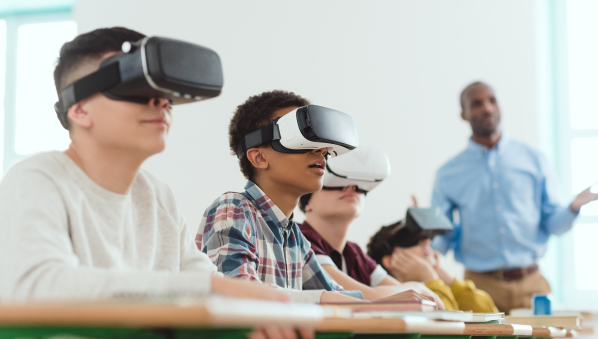Virtual reality (VR) and augmented reality (AR) technology — collectively known as extended reality (XR) — is on the rise, especially in education. Seven out of 10 teachers want more VR and AR in education, especially when it reinforces the curriculum and student interest, according to a recent study by Statista. This type of technology creates opportunities for experiential learning, which:
- Helps students make deeper connections with learning.
- Gives students hands-on experiences with things they may never otherwise encounter.
- Goes beyond rote memorization and into immersive learning.
- Customizes experiences to students’ interests, abilities, and learning styles.
You can see what XR learning is like by exploring VR and AR apps like Mapper’s Delight, Visceral Science, Gravity Simulator and more. Most often the only VR equipment you need is a VR headset, but the experience can be enhanced with haptic gloves and other equipment.
By making learning immersive and experiential, VR and AR technology can help create a better understanding of complex topics. XR facilitates a new, exciting kind of experiential learning, and experiential learning has been proven to work.
A rigorous meta-analysis of experiential learning outcomes across 89 studies showed overwhelmingly positive and robust results for students. Experiential learning outcomes are nearly 50% better than traditional learning outcomes. Through experiential learning, students increase cognitive and social skills, meaning they retain information better, improve problem-solving and develop a deeper understanding of social issues.
By helping students experience feelings of wonder and delight as they view the world in a new way, XR can serve as a highly effective experiential learning tool. Let’s explore eight ways that this technology can expand learning beyond the classroom.
